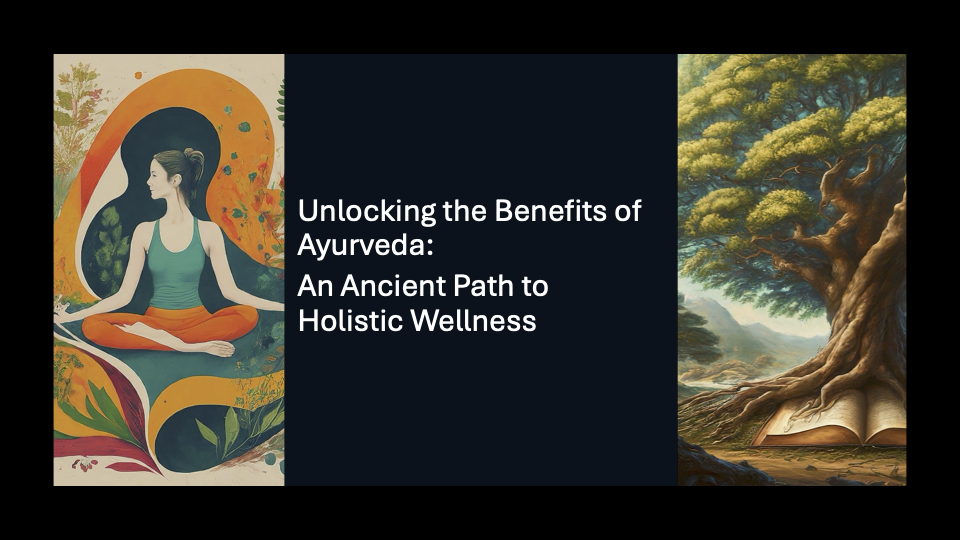Understanding Ayurveda: The Foundations of Holistic Healing
Ayurveda, often referred to as the “science of life,” is an ancient holistic healing system that traces its origins back to India over 5,000 years ago. Rooted in the belief that health and wellness depend on a delicate balance between mind, body, and spirit, Ayurveda provides a comprehensive approach to achieving holistic wellness. Central to Ayurvedic philosophy is the concept of doshas, which are the elemental forces governing physical and mental processes.
The three doshas—vata, pitta, and kapha—represent different combinations of the five elements: air, space, fire, water, and earth. Vata, composed of air and space, is associated with movement and communication. Pitta, made up of fire and water, governs digestion and metabolism. Kapha, consisting of water and earth, is linked to structure and lubrication. Each individual possesses a unique combination of these doshas, which influences their physical constitution, temperament, and vulnerabilities to certain health conditions.
Balancing the doshas is crucial for maintaining overall health. When the doshas are in harmony, the body functions optimally, resulting in physical well-being, mental clarity, and spiritual fulfilment. Conversely, imbalances can lead to various ailments and diseases. Ayurveda emphasizes the importance of personalized health strategies to balance the doshas, including diet, lifestyle modifications, herbal remedies, and specific therapeutic practices such as yoga and meditation.
Despite its ancient roots, Ayurveda remains highly relevant in contemporary health practices. Its holistic approach addresses the root causes of health issues rather than merely treating symptoms, offering a sustainable path to wellness. The integration of Ayurvedic principles into modern healthcare not only enriches conventional treatments but also provides a more comprehensive framework for achieving and maintaining optimal health.
In summary, understanding the foundational principles of Ayurveda, particularly the concept of doshas, is essential for appreciating its profound impact on holistic wellness. By fostering balance within the body, Ayurveda offers timeless wisdom for nurturing physical, mental, and spiritual harmony.
Core Benefits of Ayurveda for Overall Well-Being
- Improved Digestion: Ayurveda emphasizes the importance of Agni (digestive fire) and provides personalized dietary recommendations based on dosha to promote optimal nutrient absorption and waste elimination.
- Enhanced Immunity: Practices like incorporating immune-boosting herbs (Ashwagandha, Turmeric) and therapies (Abhyanga massage, Panchakarma detox) help strengthen the body’s natural defences.
- Stress Management: Techniques like meditation, yoga, and Pranayama address stress on physical, mental, and emotional levels, fostering a balanced and serene state.
- Holistic Approach: Ayurveda focuses on the mind-body-spirit connection, addressing the root cause of ailments rather than just symptoms, promoting long-term health.
- Personalized Practices: Dietary adjustments, lifestyle modifications, and natural remedies are tailored to individual needs, guiding individuals towards a harmonious life.
- Management of Chronic Conditions: Real-world evidence suggests that Ayurveda is effective in managing chronic conditions1 like arthritis, asthma, and musculoskeletal pain through its holistic and non-invasive therapies.
Ayurvedic Treatments and Therapies: Detoxification and Rejuvenation
Ayurveda, the ancient science of life, offers a diverse range of treatments and therapies aimed at detoxifying the body and rejuvenating the mind. Among the most renowned of these is Panchakarma2, a five-fold detoxification procedure that purifies the body by eliminating accumulated toxins (ama) and restoring balance to the doshas. This comprehensive therapy includes preparatory procedures like Snehana (oleation) and Swedana (sudation), followed by the main detoxification techniques – Vamana (therapeutic vomiting), Virechana (purgation), Basti (medicated enema), Nasya (nasal administration), and Raktamokshana (bloodletting). The benefits of Panchakarma are profound, offering relief from chronic conditions, enhancing immunity, and promoting physical and mental well-being.
Another significant Ayurvedic treatment is Abhyanga,3 a synchronized oil massage performed by two therapists. Utilizing warm herbal oils, Abhyanga nourishes the skin, improves circulation, eliminates toxins, and pacifies the doshas. It is a deeply relaxing and rejuvenating therapy that promotes longevity and vitality. Shirodhara4, another popular practice, involves the steady pouring of warm medicated oil on the forehead. This soothing treatment is highly effective in alleviating stress, improving sleep, and enhancing cognitive functions. It is particularly beneficial for conditions related to the nervous system, such as anxiety and insomnia.
Herbal steam baths, known as Swedana5, form an integral part of Ayurvedic detoxification therapies. By inducing sweating, Swedana helps in the expulsion of toxins through the skin, relieves muscle tension, and improves metabolic functions. This therapy is often used as a preparatory step in Panchakarma to enhance the efficacy of subsequent treatments. Additionally, Swedana aids in weight management and provides relief from respiratory ailments by clearing congestion.
The holistic approach of Ayurvedic treatments not only addresses specific health issues but also promotes overall vitality and balance. By integrating these ancient therapies into one’s lifestyle, it is possible to achieve a state of harmony between the body, mind, and spirit, leading to optimal health and well-being.
Incorporating Ayurvedic Principles into Modern Life
Ayurveda, an ancient system of holistic wellness, offers timeless principles that can be seamlessly integrated into our modern lives. Embracing these principles can lead to a balanced lifestyle, preventive healthcare, and a profound connection with nature. Central to Ayurveda is the concept of doshas—Vata, Pitta, and Kapha—which are biological energies found throughout the human body and mind. Understanding one’s dosha type is pivotal in tailoring a personalized diet and lifestyle that enhances overall well-being.
Personalized diet plans based on dosha types can be transformative. For instance, individuals with a predominant Vata dosha should focus on warm, grounding foods like cooked grains and root vegetables, while those with a dominant Pitta dosha may benefit from cooling foods such as fresh fruits and leafy greens. Kapha types thrive on light, dry foods like legumes and cruciferous vegetables. Incorporating seasonal foods into your diet, aligned with the Ayurvedic seasonal routine (ritucharya)6, can further harmonize your body with nature’s cycles, promoting optimal health.
Daily routines (dinacharya)7 are another cornerstone of Ayurvedic practice. Simple habits such as waking up early, practicing mindfulness or meditation, and oil pulling can significantly enhance vitality. Regular self-massage with warm oil (abhyanga) is known to improve circulation, nourish the skin, and calm the mind. Additionally, incorporating yoga and pranayama (breathing exercises) into your daily regimen can balance the doshas and promote mental clarity.
Herbal remedies and natural therapies are easily integrated into modern living. Commonly used herbs like ashwagandha, turmeric, and tulsi offer a myriad of health benefits, from boosting immunity to reducing stress. Simple practices such as drinking warm water infused with lemon and honey in the morning can aid digestion and detoxification. Utilizing natural therapies like aromatherapy with essential oils can further support emotional and physical well-being.
Adopting Ayurvedic principles does not require drastic changes. Small, consistent adjustments to your daily habits and diet can accumulate into significant health benefits, leading to enhanced vitality and holistic wellness.
References
1. Nader T, Rothenberg S, Averbach R, Charles B, Fields JZ, Schneider RH. Improvements in chronic diseases with a comprehensive natural medicine approach: a review and case series. Behav Med. 2000;26(1):34-46. doi:10.1080/08964280009595751
2. Singh N. Panchakarma: Cleaning and Rejuvenation Therapy for Curing the Diseases. Journal of Pharmacognosy and Phytochemistry. 2012;1(2):9.
3. Madhukar LS, Nivrutti BA, Bhatngar V, Bhatnagar S. Physio-Anatomical Explanation of Abhyanga: An Ayurvedic Massage Technique for Healthy Life. J Tradit Med Clin Natur. 2018;07(01). doi:10.4172/2573-4555.1000252
4. Moharana H, Mahapatra AK, Maharana L. Therapeutic efficacy and mechanism of action of Ayurvedic Shirodhara: An evidence-based review. World Journal of Ayurveda Science. 2017;(1):9.
5. Parida A, Jena S, Sawant V. A critical review on action of Swedana vis-a-vis Sudation therapy. International Journal of Ayurveda and Pharma Research. Published online February 2, 2020:66-68.
6. Ratre DG, Mishra DPK, Markam DN, Koshima DO. Introduction to Ritucharya according to Ayurveda – a review. World Journal of Pharmaceutical Research. 2023;12(4):6.
7. Suryawanshi PG, Mishra BR, Purohit HJ. Importance of Dinacharya in a routine life. Journal of Ayurveda and Integrated Medical Sciences. 2021;6(6):156-160.

